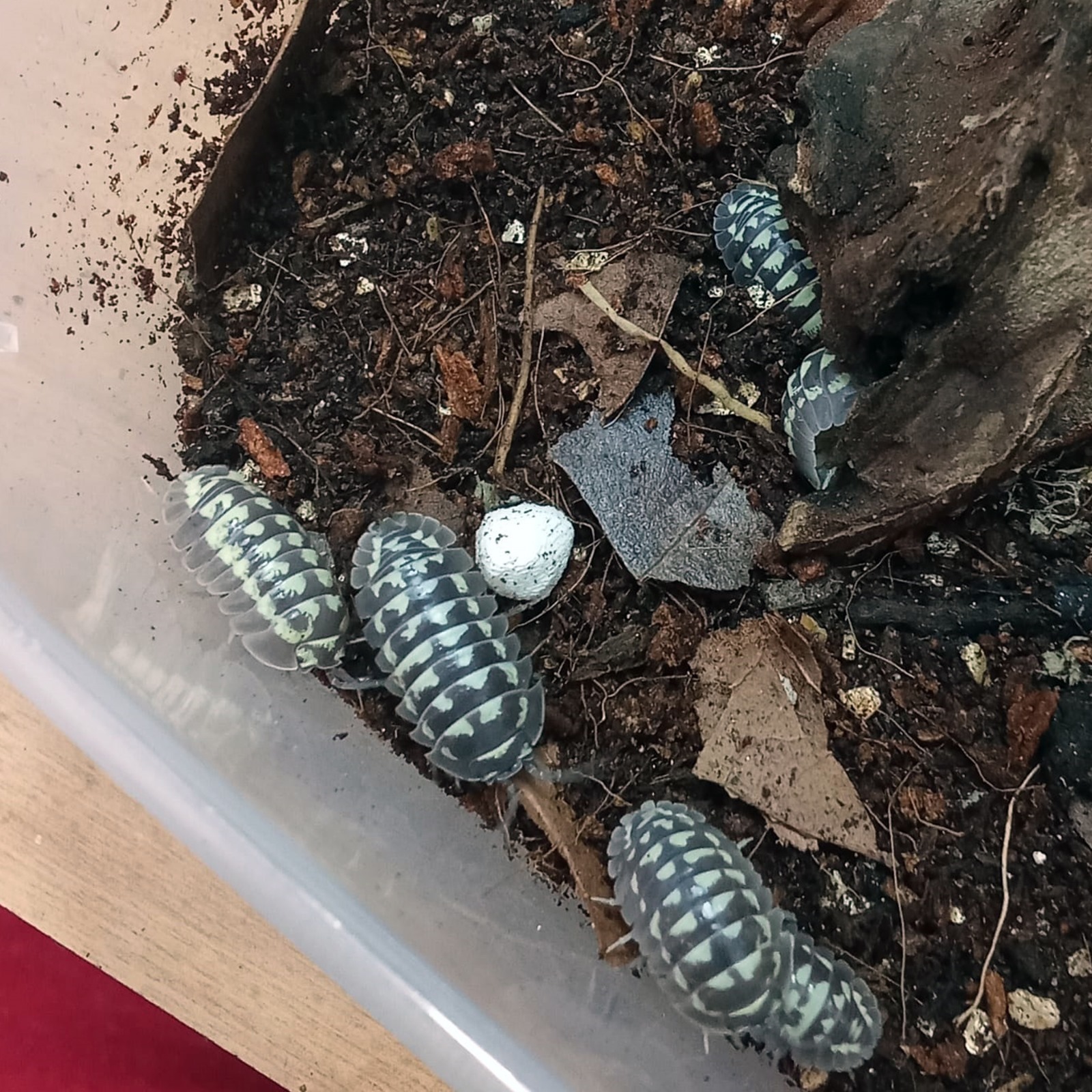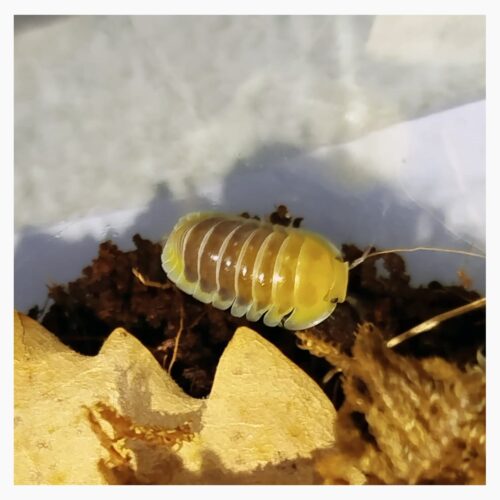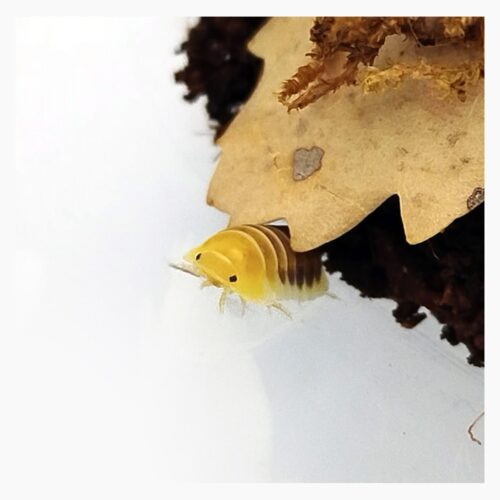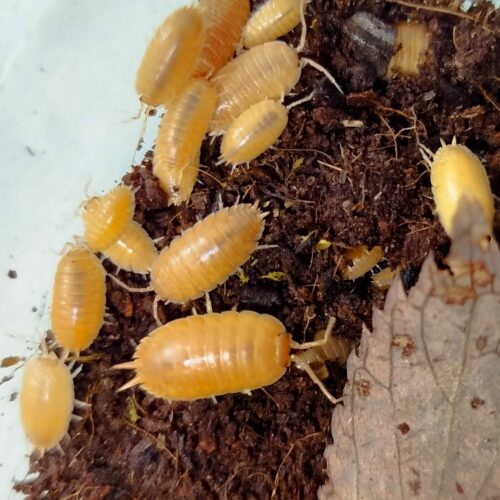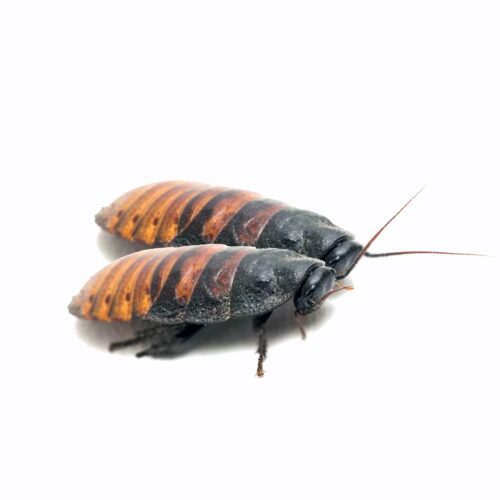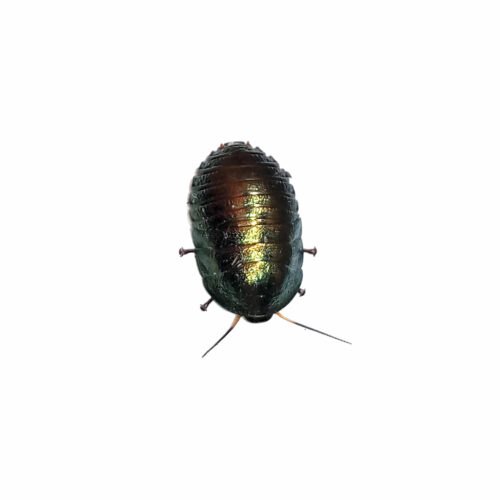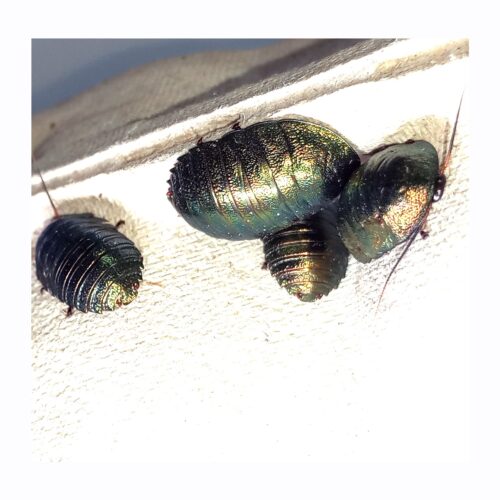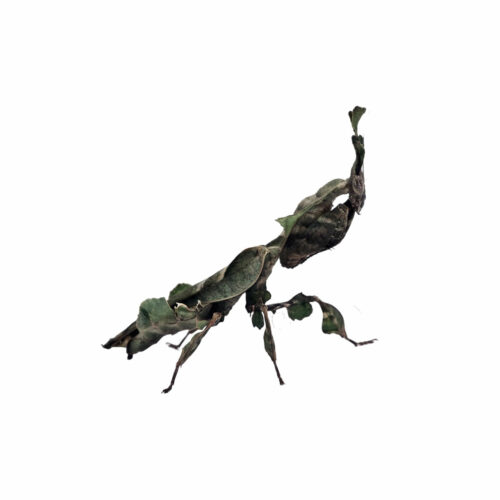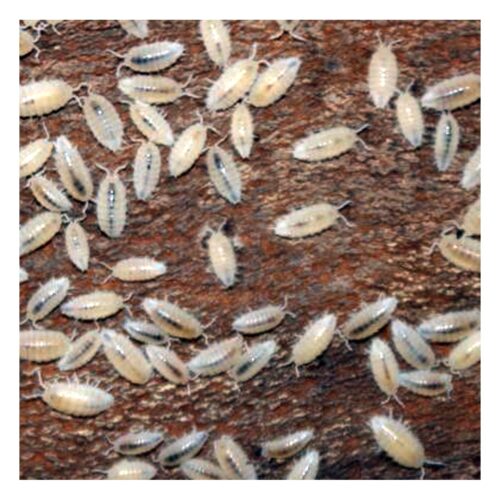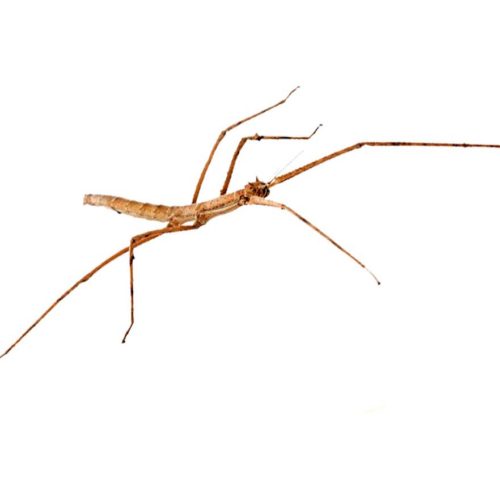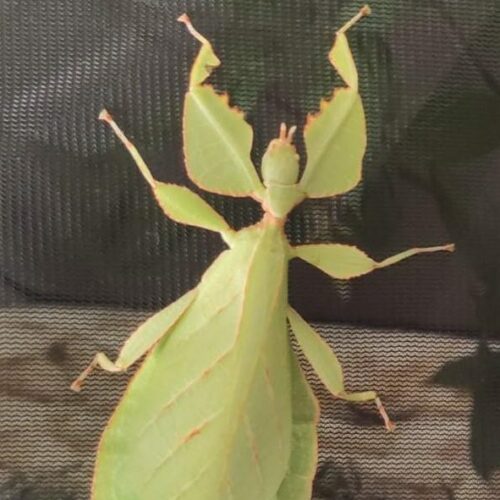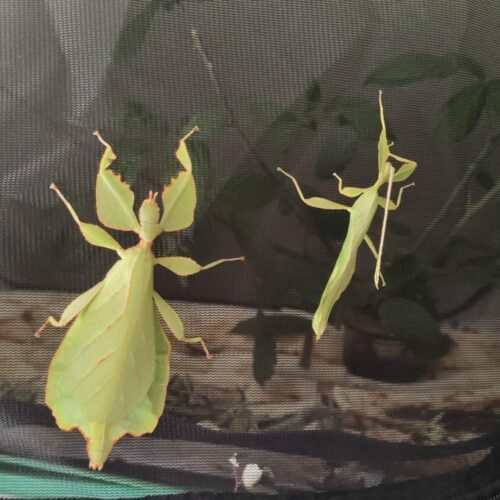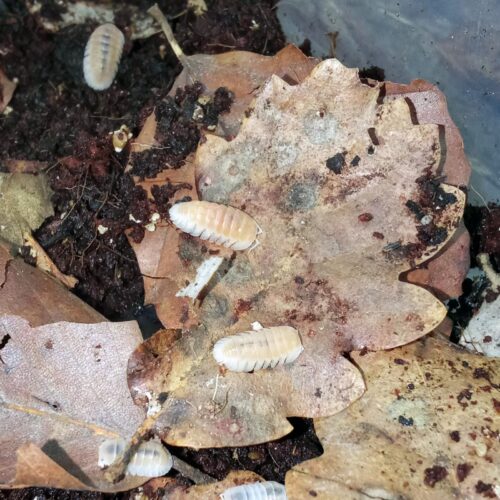
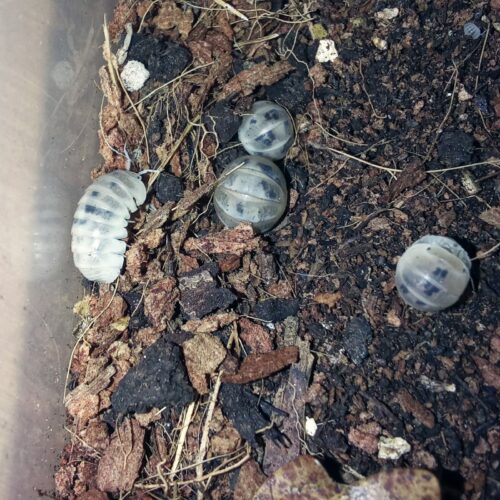
Armadillidium gestroi “White Spotted”
2,50€
The Armadillidium gestroi “White Spotted” is a fascinating isopod with a unique pattern of white spots on a dark body. Perfect for bioactive terrariums, it aids in organic matter decomposition and adds a special touch to your ecosystem. A great companion!
Technical Data Sheet: Armadillidium gestroi “White Spotted”
Scientific Name: Armadillidium gestroi “White Spotted”
Common Name: Armadillidium gestroi white spotted
Family: Armadillidiidae
Description: The Armadillidium gestroi “White Spotted” is a terrestrial isopod known for its distinctive coloration, featuring a dark body with scattered white spots. Its segmented exoskeleton allows it to roll into a ball when threatened. This variety is highly valued among isopod enthusiasts and in bioactive terrariums.
Size: Reaches an adult length of approximately 1.5 cm to 2 cm.
Natural Habitat: Native to Europe, it inhabits humid environments with organic-rich soils, often hiding under logs, stones, and leaf litter.
Care Requirements:
- Humidity: Moderate to high (60-80%). A humid and a drier area within the terrarium is recommended.
- Temperature: Between 18°C and 26°C.
- Ventilation: Moderate, avoiding excessive condensation.
- Substrate: A mix of coconut fiber, dry leaves, moss, and decaying wood.
Diet: Omnivorous and detritivorous. Feeds on decomposing organic matter, dry leaves, rotting wood, calcium-rich foods (cuttlefish bone, crushed eggshells), and occasionally fruits and vegetables.
Behavior: Moderately active, social, and gregarious. It is recommended to keep them in colonies. Their ability to roll into a ball serves as an effective defense mechanism against predators.
Reproduction: Easily reproduces in captivity, with a gestation period of approximately 2 months. Offspring hatch as miniature versions of the adults and develop through successive molts.
Uses and Benefits:
- Contributes to ecological balance in bioactive terrariums.
- Helps decompose organic material.
- A fascinating species for breeding and keeping exotic isopods.
Observations: For proper maintenance, a varied diet should be provided, and humidity and ventilation levels must be controlled to prevent dehydration or excessive fungal growth in the substrate.
| Options |
1 unit |
|---|
Related products
Cubaris jupiter
there is stock
there is stock
Gromphadorhina portentosa
Sold out
Pseudoglomeris Magnifica
Sold out
Phyllocrania paradoxa
Sold out
Trichorhina tomentosa
there is stock
Stick insect (Medauroidea extradentata)
Sold out








